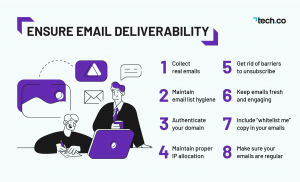Digital marketing is growing rapidly. It’s the primary channel for every startup, given its expansive reach and capability to provide quick and detailed results. Compared to traditional marketing mediums, digital marketing is definitely cheaper, too.
So far, so good.
However, like everything else, there are horror stories that haunt digital marketing too. Stories scary that are enough to keep any digital marketing practitioner up at night, stories that can happen to you, too. In this article, we’re going to discuss seven digital marketing horrors and provide tactful ways to handle these scary situations.
Horror #1: The Haunted E-commerce
Your higher-ups have already provided substantial financial support for your team’s plan to ramp up and promote a brand new e-commerce system. So far, everything is in order. You have tailored activities for various digital channels, continuous PPC campaigns, the site is filled up with quality content to the brim, and other forms of digital assets are in place.
Everything’s lined up for a sale. Only one thing’s missing: customers.
The solution
Before you panic, make sure every digital effort is properly deployed and in sync with other elements. If you have already checked every digital marketing activity at least three times and find everything’s running smooth, it’s time to consider the prospective customer’s level of trust with your e-commerce site.
To easily build trust, opt for tested and proven payment solutions that offers quick, easy, and secure transactions like PayPal. Offer clear and user-friendly policies so that prospective customers understand the details of the transaction and they’re more inclined to part with their money.
Showing your site’s security certificate in key areas of your site is a great idea as well, since new customers tend to need proof that will quell their fears before they buy. Last but not the least, sprinkle some human touch: show them the people behind the site. Make sure to include testimonials from buyers for a stronger trust base.
Horror #2: The Sneaky Social Media Crisis
You’re on a vacation, enjoying the warmth of the sun while you’re idling by the beach, sipping your piña colada when you received a call from your manager or team member who informs you that a social media crisis has blown up and they need your help right away.

Image credit: Skitterphoto via Pexels
In one snap, your precious vacation is ruined.
The solution
This is one of the situations digital marketers are afraid of. While social media crises can’t be avoided, you can always nip it in the bud or at least control it before it spreads. Don’t let a social media crisis catch you off guard by using social media monitoring tools like Sysomos. By applying “social listening,” the term used for activities that track online public conversations, you can see the people’s sentiment about your company, news updates concerning your company, and even identify key influencers in an instant.
Social listening allows you to address negative sentiments immediately, especially if it involves key influencer and effectively stop a possible crisis in its tracks. Always keep yourself updated on the economy, law, weather, and current trends as these factors can invariably affect the people’s sentiment towards your brand. Having this foresight will allow you to enjoy a splendid vacation in peace.
Horror #3: The Faulty Email
You’ve been working for days on an email designed to generate leads. You believe that you have dotted all the i’s and crossed all the t’s. The keywords are there, the logo is in the right place, and it can answer instantly the what, why, when, where, and how.

Image credit: Pixabay
Then you noticed, only after you have pressed send, a glaring typographical error that will change the whole context of the email’s message.
The solution
Act quickly. Good thing email service providers like Gmail offers a way to recall unwanted email messages. If it’s been days since you’ve sent the email, your only solution is to come up with a way to work with the mistake. For example, you can turn it into a game. Follow up with an email
that asks recipients to spot the typographical error and offer promo coupons as a prize. This way, you made the recipients actually read the email, increase the chance of conversion, and actually saved yourself from embarrassment.
Next time, seek the assistance of a proofreader. Stop yourself from making mistakes that digital marketers are afraid of.
Horror #4: The Data Wipeout
You’re in the zone. You’ve been churning campaigns upon campaigns and you’re sure that you’re racking up significant numbers that will surely impress your manager. You open your computer to check the clean data, treated with specific formulas for specific metrics, only to find out that the file is corrupted, wiped out. You log on to your data tracking services site to download the latest version of your file and discovered that it’s unsorted and there are traces of duplicates.

Image credit: Pixabay
You’re back to square one.
The solution
There are two ways approach this problem. First is to try recovering the previous version of the file and hope the file is still intact. The other way is to try syncing with other free data tracking tools and hope that they’re using the same metrics or applying the same formulas as you. When all else fails, you’ll have to own up and work on putting it back together.
Always have a backup storage for critical files, especially data. Different tools and applications treat data differently, so make sure that you’re using the appropriate ones according to your needs. To avoid unsorted and unsanitized data mishaps, make it a habit to sort and clean them the moment you get to your office and before you leave.
Horror #5: The Misplaced User Experience
Your team decided to make a site revamp. Everyone agrees that the new site is indeed sleeker and more stylish. After a few days, you noticed that the site’s conversion rate is significantly lower than usual. You whipped out your site activity tracker and found out that your bounce rate is going through the roof. You suspect that this is due to the new interface which the data backed up. However, you still hesitate; the team has already invested substantially to this new interface and everyone’s happy. You don’t want to be the one to break the news.

Image credit: Pixabay
The solution
The only way to solve this is to approach your manager privately and show concrete proof that the revamp caused the sudden drop. Digital marketers are afraid of wasted effort, so quickly follow up with solutions that may alleviate the solution without significantly changing the site. One idea is to apply rigorous A/B testing until you recover the conversion rate and bounce rate your site once enjoyed.
Sometimes, newer doesn’t mean better. It always depends on your site’s target audience. Failing to consider their preferences and tendencies will hurt your business’ online performance. An offkey user experience design might push away what was once your loyal customers: they might find it complex to their liking or their preferred browser doesn’t support some features of the new site.
Horror #6: The Mobile Fiasco
You’ve proposed a mobile app to your higher-ups. You argued that having a mobile app is necessary for a cohesive digital marketing campaign. Thankfully, they agreed. You oversaw the whole development process, which took weeks before deployment.

Image credit: Pixabay
You thought that the app is great and you’ve been persistently promoting it to friends and acquaintances, until somebody found out a critical flaw.
The solution
First, you have to relax. Determine the specific reason why the app is built in the first place. Is it to foster loyalty? Is it to function as a hub for your company’s ads? Whatever the reason might be, make sure that the discovered critical flaw doesn’t hinder the app’s specific goal. You can have it fixed through updates later. Otherwise, you’ll have to take it down immediately, have it fixed—which may take weeks—and put it up again.
The next time you decide to implement mobile apps to your digital marketing campaign, make sure that your developers know and use the test-driven development approach to decrease the chances of significant errors and bugs. Before app deployment, make sure the team acts as beta testers for the app until everyone agrees that it’s good to go.
Horror #7: The Zero Conversion
You’ve been running PPC campaign for weeks and you’re about to reach the budget limit but still no conversion is happening. Congratulations, you’ve successfully achieved what digital marketers are afraid of.

Image credit: Pexels
The solution
Being a product champion of your company, as all digital marketers are, it will be easy for you to see if your product’s target market and your PPC campaign’s target audience are aligned. If this is not the case, you have to gauge if the budget you received for the campaign is enough, considering the factors involved. If so, you simply have to request for an additional budget after showing direct correlation between budget and PPC campaign success.
Use your tracking tools to your advantage by determining the peak activity of your target audience and schedule appropriately. Be ruthless enough to ditch or improve underperforming ads and to maximize the use of better performing ads.
These horrors might seem petty problems to seasoned digital marketing practitioners, but to newcomers, these are pretty big deal.
They key to any digital marketing effort is to always prepare for the worst. Avoiding problems is always better than solving them. When problems do come, never hesitate to use data and your creativity to help you out.
What about you, what’s your solution to these digital marketing horrors?
Digital & Social Articles on Business 2 Community(71)








